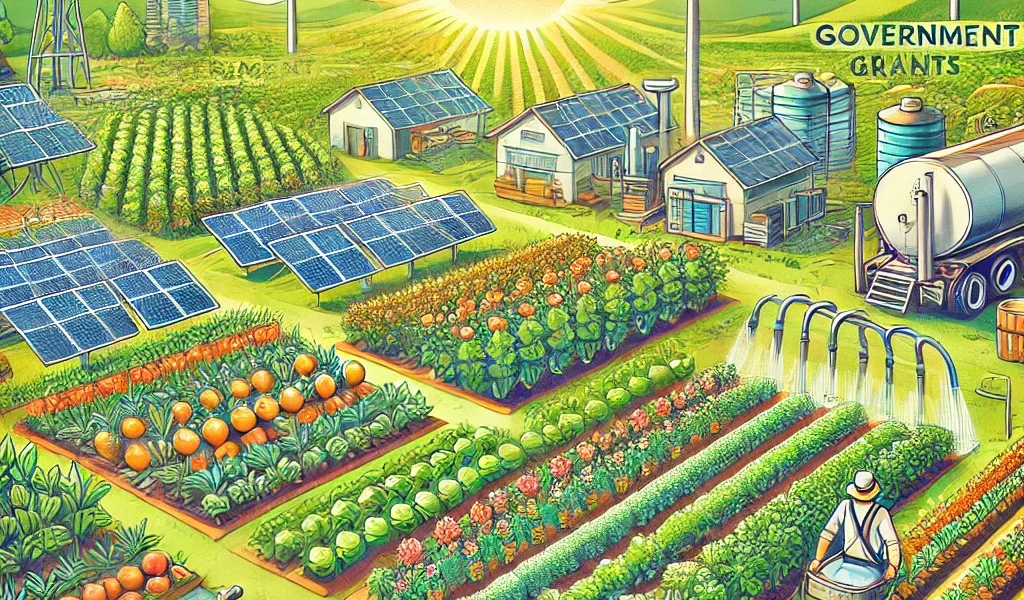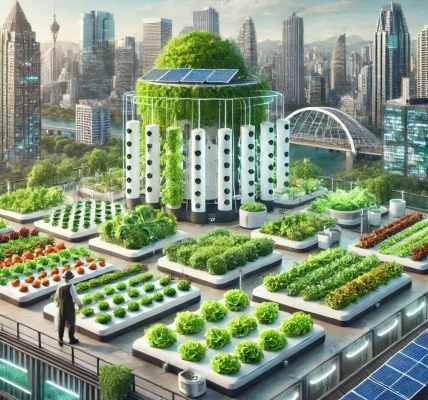Introduction
Sustainable agriculture is essential for maintaining soil health, reducing environmental impact, and ensuring long-term food security. To encourage farmers to adopt eco-friendly farming practices, governments worldwide offer various grants and financial assistance programs. However, many farmers struggle with understanding the application process and eligibility criteria.
This comprehensive guide will walk you through the steps to apply for government grants for sustainable agriculture, ensuring you have the best chance of securing funding to support your farm’s transition to sustainability.
Importance of Government Grants for Sustainable Agriculture
Government grants for sustainable agriculture offer several benefits, including:
- Financial Support: Helps farmers cover the costs of organic certification, eco-friendly fertilizers, and sustainable irrigation systems.
- Encouragement of Eco-Friendly Practices: Promotes crop rotation, permaculture, and reduced chemical use.
- Increased Productivity: Provides resources for modern farming technologies that boost yields while minimizing environmental impact.
- Risk Management: Supports farmers in mitigating climate change-related risks, such as droughts and soil degradation.
Types of Government Grants for Sustainable Agriculture
1. Organic Farming Subsidy Programs
These grants help farmers transition to organic farming by covering certification costs and supporting the use of natural pesticides and fertilizers.
2. Renewable Energy for Agriculture Grants
Financial support for installing solar panels, wind turbines, and bio-energy systems to reduce reliance on fossil fuels in farming operations.
3. Water Conservation and Irrigation Grants
Funding for drip irrigation systems, rainwater harvesting, and other water-efficient technologies to reduce water wastage.
4. Soil Health and Regenerative Agriculture Grants
Grants supporting crop rotation, no-till farming, and composting to improve soil fertility and reduce erosion.
5. Agroforestry and Biodiversity Grants
Financial aid for integrating trees into farmland, promoting pollinator-friendly plants, and preserving native species.
Step-by-Step Guide to Applying for Government Grants
Step 1: Research Available Grants
The first step in applying for a government grant is to identify suitable programs. You can do this by:
- Visiting official government websites for agriculture and sustainability.
- Checking with local agricultural extension offices.
- Exploring online databases and non-profit organizations that list available grants.
Step 2: Determine Eligibility Criteria
Each grant has specific eligibility requirements. Common criteria include:
- Farm size and location.
- Type of crops or livestock raised.
- Adoption of sustainable farming practices.
- Compliance with environmental and safety regulations.
Step 3: Gather Required Documentation
To apply for a grant, you’ll need to prepare the following documents:
- Farm registration details.
- Land ownership or lease agreements.
- Business plan outlining your sustainable practices.
- Financial records and tax returns.
- Sustainability certification (if applicable).
Step 4: Create a Strong Grant Proposal
A well-written grant proposal increases your chances of approval. Include the following in your application:
- Introduction: Explain who you are and your farm’s background.
- Objective: Clearly state the purpose of your grant request.
- Sustainability Goals: Detail how your project supports environmental sustainability.
- Budget Plan: Break down how the grant money will be used.
- Expected Outcomes: Describe the positive impact of your project on agriculture and the environment.
Step 5: Submit Your Application
Once you have compiled all the necessary documents and written your proposal, follow these steps to submit your application:
- Online Submission: Many government programs have digital portals for grant applications.
- Paper Submission: Some programs may require physical submission of applications via mail.
- Through Agricultural Offices: Local agricultural extension offices often assist farmers in submitting applications correctly.
Step 6: Follow Up on Your Application
After submission, track the progress of your application by:
- Checking status updates online.
- Contacting grant authorities for inquiries.
- Being prepared for interviews or additional documentation requests.
Tips for a Successful Grant Application
- Start Early: Grant applications can be time-consuming; begin the process well in advance of deadlines.
- Be Clear and Concise: Avoid jargon and write in a straightforward manner.
- Demonstrate Impact: Show how your project benefits both the environment and the agricultural industry.
- Seek Expert Advice: Consult with grant advisors or agricultural extension officers for guidance.
Common Mistakes to Avoid When Applying for Grants
- Incomplete Applications: Ensure all required fields and documents are provided.
- Lack of Supporting Evidence: Include research data or past achievements to strengthen your case.
- Missing Deadlines: Late submissions are often rejected.
- Ignoring Follow-Ups: Regularly check for updates and respond promptly to any requests from grant authorities.
Conclusion
Applying for government grants for sustainable agriculture can be a game-changer for farmers looking to adopt eco-friendly practices. By following the steps outlined in this guide, you can improve your chances of securing funding to make your farm more sustainable and profitable.
Stay updated on new grant opportunities by regularly checking government websites and agricultural offices. With the right financial support, you can contribute to a greener and more sustainable future for agriculture.




